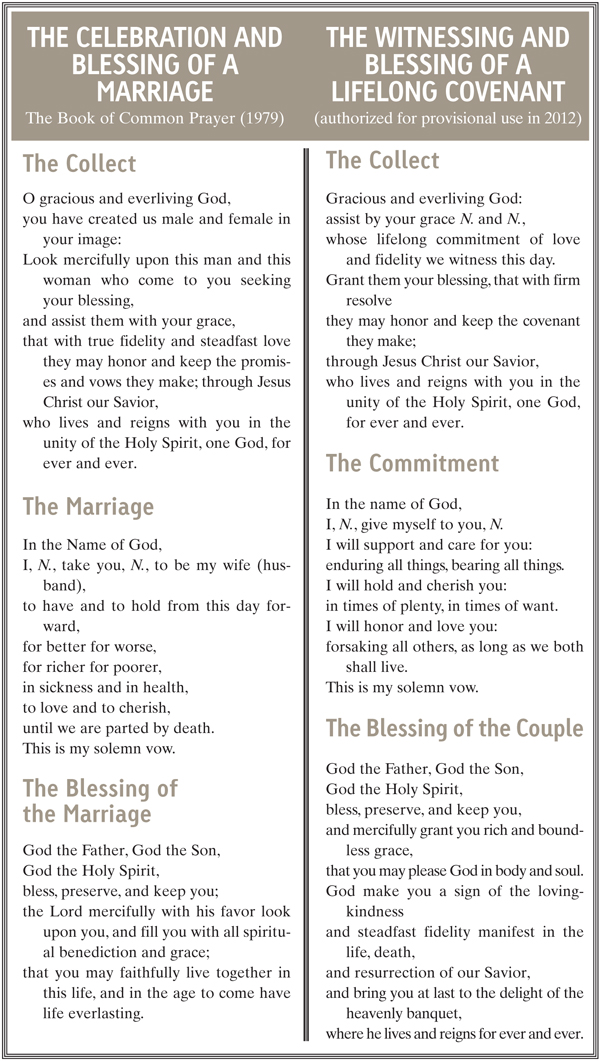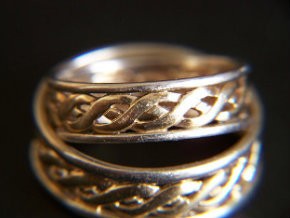It looks like a wedding: The new Episcopal same-sex rite
Episcopalians now have an officially approved way to do what some of them have been doing, informally and unofficially, for quite a while. In July the church’s General Convention gave its blessing to blessing. By a surprisingly large majority vote, it authorized for provisional use a liturgy that prescribes what is to be done and said at a service of blessing a same-sex union.
Like every liturgical text, this one is, among other things, an expression of theological convictions. Inasmuch as the Anglican tradition to which the Episcopal Church belongs has typically found its theological identity in appointed forms of common prayer as much as in confessional formulas, it is all the more appropriate to ask what beliefs will be enacted when the new liturgy comes into use in Advent. What does this service say, theologically, about the church that has produced and endorsed it?
 It would be a mistake to suppose that what is most obvious about the rite is what the rite obviously is. What is obvious is how closely the “shape of the liturgy” conforms to what used to be called “The Form of Solemnization of Matrimony” and is now “The Celebration and Blessing of a Marriage.” A congregation gathers; a couple joins them; the presiding cleric explains why they are all there. After readings from scripture and a sermon, the couple is presented and the presider asks each of them whether they truly mean to do what they have come for. Stated prayers are recited. Then each of the two takes the other’s hand, repeats a solemn promise, gives a ring—and finally, on these promises and the couple who have made them, the presider pronounces a formal blessing. Nobody would say, with Shakespeare’s Benedick, “This looks not like a nuptial.” That is just what it does look like.
It would be a mistake to suppose that what is most obvious about the rite is what the rite obviously is. What is obvious is how closely the “shape of the liturgy” conforms to what used to be called “The Form of Solemnization of Matrimony” and is now “The Celebration and Blessing of a Marriage.” A congregation gathers; a couple joins them; the presiding cleric explains why they are all there. After readings from scripture and a sermon, the couple is presented and the presider asks each of them whether they truly mean to do what they have come for. Stated prayers are recited. Then each of the two takes the other’s hand, repeats a solemn promise, gives a ring—and finally, on these promises and the couple who have made them, the presider pronounces a formal blessing. Nobody would say, with Shakespeare’s Benedick, “This looks not like a nuptial.” That is just what it does look like.





